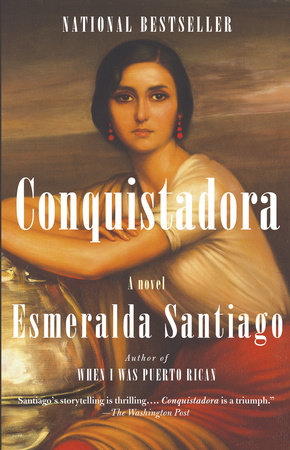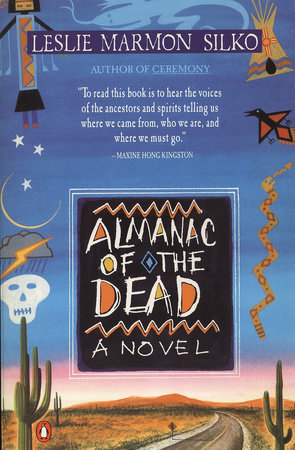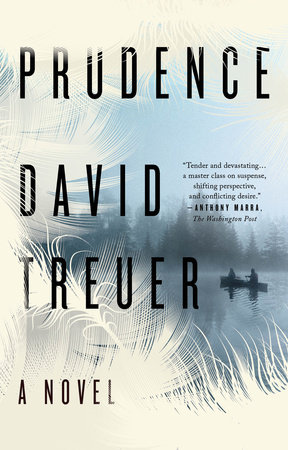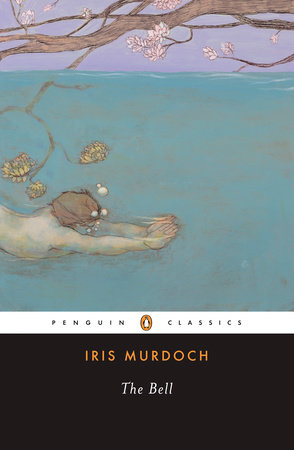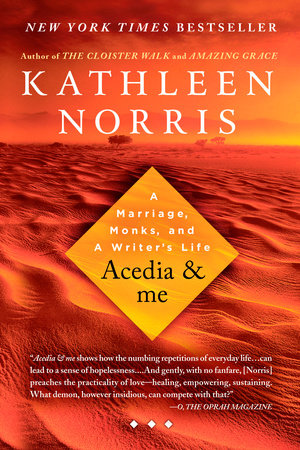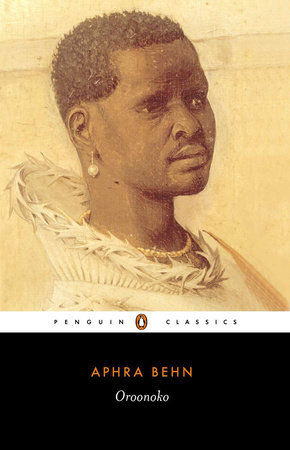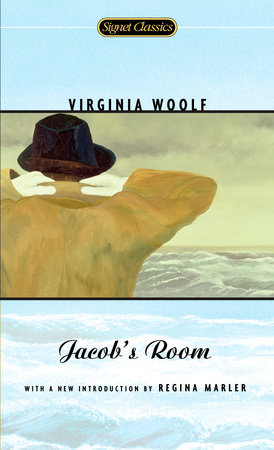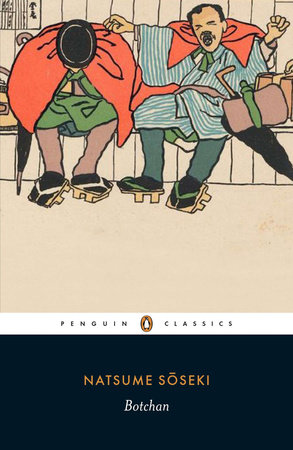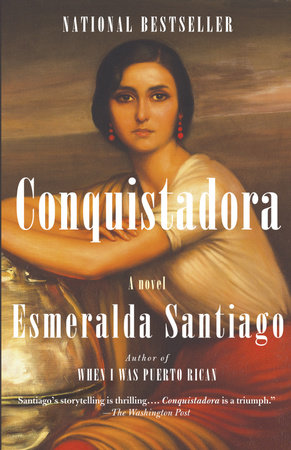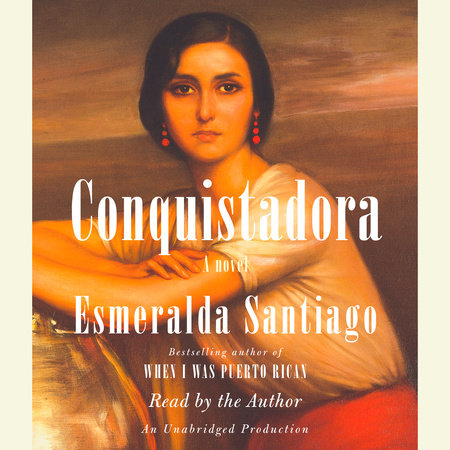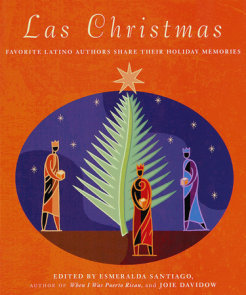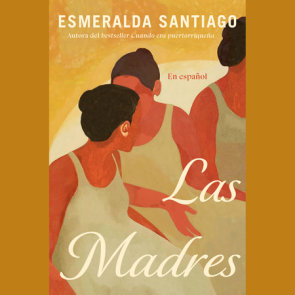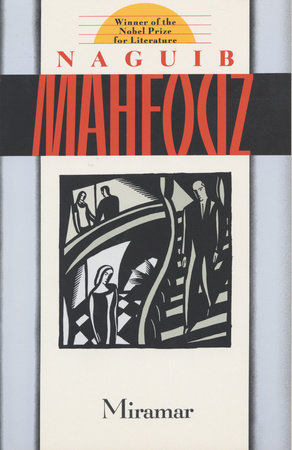Author Q&A
Q: Conquistadora is a sweeping story, an epic of Puerto Rico set across three decades. How did this book fifirst start for you? What was the kernel that eventually led to Conquistadora?
A: Soon after my first memoir, When I Was Puerto Rican, was published in 1993, I was helping a friend pack her things in preparation for her move from a house to an apartment. Inside a closet I found a heavy, ornate sterling candelabrum with six arms. It was unlike anything else in her home, which was as sleek and modern as she was. She said it was brought to the United States from England by her six-times-great-grandmother and had been passed down to the eldest daughter ever since.
My own grandmother had died recently, and my connection to previous generations on her side had vanished with her. Over the next few days I pondered the lack of information about my family. Asking my mother didn’t yield much beyond what she remembered about her close relatives. She is fair skinned, my father much darker, and I knew that, at least on his side, there must have been black great-grandparents, possibly slaves. I tried to imagine who they might have been, what life in Puerto Rico could have been like before Mami and Papi were born.
I began to read about the early twentieth century, and each new fact sent me to previous years until I was immersed in the Puerto Rican nineteenth century. I was particularly interested in what work people might have performed, what their lives might have been like. With no information about my real ancestors, I started to invent a family history based on my research. From the first, I sensed my imaginary ancestors jostling for my attention. I had to listen. The quieter I was, the louder and more loquacious they
became.
While researching and listening to my imaginary ancestors, I wrote three memoirs, translated two books, coedited two anthologies, adapted one of my memoirs into a film for Masterpiece Theatre, cowrote and performed a radio play, and had essays appear in various publications and as NPR commentary. But regardless of what I was working on, mi gente— my people—filled the silences between other work, other worlds, other words.
My friend’s candelabrum inspired the one that Ana places on the dining table in El Destino the night she decides to become the woman Severo has dreamed about.
Q: You were born in Puerto Rico and you’ve written about Puerto Rico before—perhaps most notably in your memoir When I Was Puerto Rican (hailed as “a welcome new voice, full of passion and authority,” by the Washington Post). What research did you do in the course of writing this novel?
A: I researched Conquistadora backward. That is, I didn’t start with a year and read forward. I read about my parents’ generations, then about my grandparents,’ then kept going back until one day I envisioned Ana Larragoity Cubillas reading her conquistador
ancestor’s journals, dreaming about Puerto Rico. Imagining what she might have read led me to earlier documents about the conquista, and the differences between how the Spanish conquered Puerto Rico as opposed to, say, Peru. But the more I read about the three hundred years before she was born, the more curious I became about Ana’s particular time in history.
The mid-nineteenth century was a period of technological advances, political turmoil around the world, and, as another character in Conquistadora notices, the beginnings of a distinct Puerto Rican identity different from a colono, the word the españoles used to describe the native-born. The midcentury was also the apogee of King Sugar in Puerto Rico. I read books and academic papers by Professors Sidney Mintz, Francisco Scarano, Luis A. Figueroa, and others, to get a sense of how the industry developed in Puerto Rico, as well as other places like Cuba, Jamaica, and Louisiana.
I’ve read countless histories, letters, journals, financial records, and all manner of curious little-known facts, and learned as much as I could about cholera and other common diseases of the time and about the remedies and attempts to relieve the symptoms. I loved Salvador Brau’s history of Puerto Rico, published in 1892, and learned from him about the secret abolitionist societies. Along the way, I rekindled my admiration for the work of Dr. Ramón Emeterio Betances, the ophthalmologist, poet, writer—and political activist—who so inspires Ana’s son, Miguel Argoso Larragoity.
I traveled to Puerto Rico frequently, to walk through miles upon miles of sugarcane in various stages of cultivation. I stepped upon the cobblestones of Trinidad, Cuba, a ninteenth century town built from sugar production, its center so well preserved that it has been named a World Heritage Site by the United Nations. I’ve spent hours along the narrow streets of Old San Juan to feel what Miguel’s world could have been like, and made as many forays into el campo, the Puerto Rican countryside that so inspired Ana.
I thought I knew the island where I was born, but placing myself in a different time with my invented ancestors gave me a fuller understanding of my own history.
Q: What new stories about the island did you discover?
A: I was surprised by how much we don’t know here and on the island about Puerto Rico preinvasion by the United States in 1898. I was surprised by how many estadounidenses like Mr. Worthy lived there in the early and mid-nineteenth century. Reading Alejandro O’Reilly, George Flinter, Bartolomé de las Casas, and others gave me a sense of how Europeans viewed Puerto Ricans and how the island and its people ignited many imaginations. I learned that the cholera epidemic between 1854 and 1857 was part of a
worldwide pandemic. While they are not included in Conquistadora, the mutinies by Spanish soldiers because their salaries and stipends were chronically late or not delivered at all, fascinated me. In one of these mutinies, in 1855, the soldiers turned the cannons designed to repel invasions in the direction of the city. Sanjuaneros panicked, and people died fleeing the soldiers who were supposed to protect them. I was surprised to learn that Samuel Morse spent time on the island, where his daughter lived, and that he installed the first telegraph in Puerto Rico between his daughter’s home and her husband’s office in the hacienda they owned.
Q: Does the Spanish settling of the country still echo in Puerto Rico today? And what were the diffificulties—and what was liberating—about setting the story 150 years in the past?
A: The Spanish influence in Puerto Rico echoes throughout the culture to this day. We, of course, consider Spanish our mother tongue, even as we still bear scars, five hundred years later, of the genocide of the taínos. The United States invaded the island in 1898 during the Spanish-American War. In 1917, Puerto Ricans were granted limited American citizenship. Today we live in a peculiar ambivalence as our culture is becoming less Spanish-centric and more estadounidense. Do we identify more with the conquerors and colonizers of four hundred years of our history, or with the more recent invaders/colonizers of 1898?
The biggest difficulties in setting Conquistadora in the nineteenth century was collecting enough information about the island for me to feel as if I’d lived there then. I needed to know everything about how my imaginary ancestors lived. What did they look like? What did they wear? What did they eat? How did they move from one place to another? What did they hear, see, smell, touch? Most of the original sources have disappeared, and it was hard to find the details I sought. I often appealed to the characters to help me. For example, Nena la Lavandera—the laundress in the novel—told me that the patrones used perfumed linens to wipe their bottoms. I was not sure whether this made-up detail would end up in the final version of the novel. Months after writing that passage, I read that, in fact, some wealthy people took care of this necessary function the way I’d described it. After that, I trusted my characters’ voices even more.
I was also inspired by the research itself, by the process of learning about the past and this particular time in the history of Puerto Rico and the Spanish settling of the island. When I read about the Bando Negro—a law designed to control the movements
and behavior of nonwhite residents, free or enslaved—I was outraged and knew that I had to show how people were affected by those shameful laws. When I read that two-thirds of the deaths during the cholera epidemic came from the gente de color and slaves, it became clear that it had to be a crucial event in the novel. I wanted to find out how the abolition of slaves in the United States, the subsequent Civil War, and the assassination of Abraham Lincoln could have direct consequences on the people of Puerto Rico. My goal was to personalize historical events, to show that we don’t live in a vacuum, that while it seems so long ago, history was somebody’s present.
Q: At the heart of Conquistadora is Ana – a young girl living a privileged life in nineteenthth century Spain, who becomes enchanted by the journals of an ancestor who traveled to Puerto Rico with Ponce de León. Ana is the driving force of the story and literally the force that brings her family to Puerto Rico. Tell us a bit about how Ana came to be. And why or how is she a “conquistadora”?
A: I imagined Ana bent over don Hernán’s journals and drawings. There she was, a petite, smart, feisty, courageous, ambitious girl seeking a better fate than the one before her. Her intense focus on the yellowing pages, the way she fingered the splotchy ink on
the parchments, the way she studied every line of don Hernán’s sketches told me that here was a woman I could identify with. We both knew that the right words on a page can change a life.
The more I thought about Ana, the more I admired her for refusing to be whom others expected her to be, and this resonated with my own story and with my own life. I loved that she saw her options clearly: If she didn’t take her life into her own hands, she
might end up, as she and her father worried, dependent on her relatives. I remember myself at the same age, poor, with a load of expectations and burdens I didn’t want to carry but equally weighted by ambition. While Ana had more resources than I had, we
both had to create our own freedom. The irony, of course, is that freedom for one person always comes at the expense of someone else’s.
Christopher Columbus and subsequent conquistadores were not seeking a new world. They were merchants looking for a product that would enrich them and keep them independent. A great many of the conquistadores were the illegitimate sons of great, or at least, wealthy men whose riches would be inherited by legitimate heirs. In that sense, Ana was like them. As a woman, she could not inherit the riches her ancestors had amassed. Like the conquistadores, Ana does whatever she has to do to achieve her goals, even if it means that others suffer. She manipulates the Argosos, uses her son as leverage, marries Severo because if she refused, him he’d leave, and she needed him as the mayordomo. One of the reasons the conquistadores were able to subdue entire populations was their force of character, their insistence that their way was the only way to do things, even if it meant erasing populations and centuries of tradition and custom. Like the conquistadores, Ana used the men and women who made her rich in the service of her own goals, needs, and ideals.
Q: Ana is an incredibly strong and willful woman, and she’s not conventionally pretty. What do you think attracts the men in the novel—Ana’s husband, Ramón; and his twin brother, Inocente; as well as Severo Fuentes, whom they hire to manage their plantation—to Ana? Were there any women like Ana living and working in Puerto Rico in the 1800s—women who, liberated from the constrictions of European society, became the masters of their own destinies?
A: At first, Ramón, Inocente, and Severo were dazzled by Ana’s position as the only daughter of a socially prominent family. Later, Ramón and Inocente were seduced by her adventurous nature and by her ability to convince them that they, like her, were destined
for greater things. A woman does not need to be conventionally beautiful to be alluring. When we fall in love, we fall in love with the image we have created of ourselves in the others’ eyes. Ana knew how to play to Ramón’s and Inocente’s fantasies of themselves until they fell in love with the image she created. Severo fell in love with her because he knew that, in a vertical society like Spain’s, the best way to advance was to marry into it.
I didn’t look for, or find, a character like Ana in Puerto Rican history of the nineteenth century, or anywhere else. She came to me. At first, I worried that I was creating a character who would have been impossible in that time and that place. But the more I read and thought about it, the more I realized that women like Ana have existed throughout time. We just don’t necessarily hear about them. History has ignored and condemned unconventional women, but they have lived and worked and built dynasties. We simply could not have reached this stage of human development without women like Ana.
Q: One aspect of the reality of life in Puerto Rico that comes as a shock to Ana—and may surprise many readers as well—is that the country’s economy in the mid-1800s relied almost entirely on slave labor. Conquistadora tells the stories of the slaves who work on the plantation Ana and her husband own: indigenous people from the island as well as African men and women kidnapped by the Spanish. What were the challenges of depicting slavery, the daily lives and the struggles? How did you approach this obviously weighty subject?
A: Long after I’d delivered the final manuscript of Conquistadora, one of my readers researched my genealogy. The earliest link she found was to a Juan Santiago, dated 1848, the same year as the Bando Negro. I asked my father whether he remembered this ancestor, and he recalled that his paternal grandmother talked about her grandfather Juan, who was “un indio salvaje.” He was black and spoke another language. I think that Juan Santiago was not a savage Indian like my great-grandmother said, but rather an African slave.
It was a poignant moment for me to imagine Juan Santiago, my great-great-greatgrandfather, probably working in the fields of some hacienda in a foreign land perhaps like the enslaved Flora, Siña Damita and Jacobo, holding on to the memory of their other
lives.
It was challenging to find information about the slaves in Puerto Rico because they left no written record. What we know about them is figures on ledgers, sometimes their names and their ages and whether they were born in Puerto Rico or elsewhere. To try to get closer to them, I read slave narratives from other islands and from the United States, and imagined how things might have been different in the Puerto Rican archipelago. Puerto Rican scholars and historians have written about the practices and regulations on the island compared with other places. Details about what the slaves ate, how they were dressed, and how their work was structured came from diverse sources, each providing pieces of information that I then compiled and combined to create human beings who might have lived, loved, worked, died in Hacienda los Gemelos.
While writing Conquistadora, I knew that the novel was not only about Ana and Severo, Ramón and Inocente. I wanted to create an entire world, not just an aspect of it. Because it was so hard to find information about Puerto Rican slaves, I felt a special obligation to bring the slaves to life. I didn’t want to deify or mythologize them. My goal was for them to be as human and flawed as the blancos.
Q: You’ve created a rich, fully realized cast of characters—some chapters are almost like minibiographies, the stories of why and how particular people came to Puerto Rico. Do you have a favorite among your characters? Anyone you can no longer abide?
A: It’s painful to have to choose one character over another because they’re all mi familia, and I love them passionately. Even don Luis, whom everyone in the novel dislikes, had positive qualities — his hospitality, for example, toward the elder Argosos. I did enjoy writing certain sections more than others, though. It was painful to write Nena’s story, but it flowed as if she were whispering it into my ear. Ramón’s walk around the hacienda the night his parents arrive came in the middle of one of my own sleepless nights.
Severo’s chapter when he rides to see Consuelo the first time we meet her came when I was cocooned at home during a blizzard in Upstate New York. José’s monument to suffering was written in a hotel in Miami while I sobbed over my laptop. I cried a lot
when I was writing Conquistadora.
My readers often talk about the humor in my books, and though there isn’t that much humor in this story, I must admit that I enjoyed writing Mr. Worthy, and did laugh out loud when I reread what I’d written.
Q: The country of Puerto Rico itself—which you describe in all its beauty and cruelty—must be recognized as one of the main characters in the book. It’s a land that deeply affects many of the characters, including Ana and Severo, who has also emigrated from Spain, and who has clawed his way out of the lower classes to become a landowner and perhaps even a gentleman. What is it that draws these two characters of very different backgrounds to Puerto Rico? What grabs them so thoroughly as to pit them against family and, sometimes it seems, against reason?
A: Many years ago I read William Carlos Williams’s poem “Adam,” about his English father who moved to Barbados as a child. One of the verses — quoted at the beginning of Conquistadora—struck me particularly, and kept me thinking: the “darker whispering
that death invents especially for northern men whom the tropics have come to hold.” The conquistadores were changed by those darker whisperings of the tropics, by the brown and black skins of the natives and the Africans, by the deep shadows caused by the
blazing sun, by the darker thoughts and actions allowed when you hold power over others. Ana and Severo wanted to control their own destinies, but that requires a particular kind of confidence and ruthlessness, and the ability to go to those dark places in your mind and in your heart. To live in the tropics, the first thing that Ana and Severo had to do was to banish guilt — if they ever had it. Once you banish guilt, you can be like the gods.
Q: Can you tell us a bit about the refrain that runs throughout the book: “We’re all a bit of a poet, a bit a musician, a bit mad.”
A: This is one of my favorite Spanish sayings. I heard it for the first time from my father, who was all three things. It is a refrain in my life, the sense that madness and art are intertwined. You need to be a little bit crazy to give yourself entirely to create anything
new, let alone art. Severo, who can easily kill a man, can also design a beautiful hilltop mansion and handle silk as he imagines it melting under his work-worn fingers. Ana is mad to believe that she can not only duplicate her ancestor’s exploits, but triumph where he failed. There is poetry in her actions and in her belief that life and history are a continuum, and that to build a future, it’s first necessary to connect to the past.
During the writing of Conquistadora, I was painfully aware that only the blancos wrote, corresponded, entered into contracts, left records. My paternal grandparents, like 80 percent of Puerto Ricans at the turn of the twentieth century, were illiterate. So were three of my aunts, although my father and his brothers could read and write and sign their names. I’m a writer who, like the bards of old, seeks poetry and music in humanity, but I seek the unheroic, unheralded lives. Maybe I’m mad.
Q: What are you working on next?
A: Ana, Severo, and the residents of Hacienda los Gemelos and El Destino continue to whisper and call to me. I’m listening.
